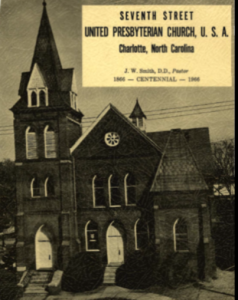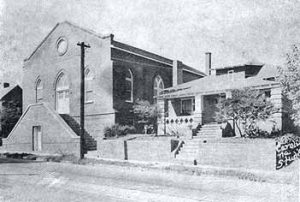Our History
First United Presbyterian Church (FUPC)
Resulted from the merger of Seventh Street Presbyterian Church and Brooklyn Presbyterian Church.
Following the Civil War, when former slaves were struggling to establish a new identity for themselves, one of the things they resorted to creating their own institutions where they could sustain and nurture themselves. The church became one of the paramount institutions to emerge. It was in 1866 when Kathleen Hayes, a former slave who worshipped at First Presbyterian Church in Charlotte, North Carolina, challenged about 30 other black members to “come down out of the gallery and worship God on the main floor.” Her efforts coincided with a movement by the Northern Presbyterian Church to send missionaries down south to assist in the Christianization of recently emancipated slaves. Mrs. Hayes’ dreams were realized when Reverend Samuel C. Alexander, a white missionary from Pittsburgh, Pennsylvania, came to Charlotte shortly after the war and purchased land on the corners of Davidson and Third Streets in his name. It was later transferred to blacks, where Mrs. Hayes’ new church, The Colored Presbyterian Church of Charlotte, was established.
Seventh Street United Presbyterian Church

In 1869, the newly formed congregation purchased a wooden Lutheran Church at the corners of Seventh and College Streets. The new membership grew from 30 to 125 persons. In 1895, the Catawba Presbytery approved the change of name to Seventh Street Presbyterian Church of Charlotte (the first half of First United). Construction began on a new building in 1894. That building, which was constructed by members themselves, working in the evenings and on weekends, is one of the most notable houses of worship in Charlotte. It is historically and culturally significant because it is one of the city’s oldest Gothic Revival Churches.
Brooklyn Presbyterian Church

The second half of First United began in 1911 when 17 persons sought permission from the Presbytery to organize a church in the Second Ward section of Charlotte. Permission was granted. The new church, named Brooklyn Presbyterian Church, operated until the 1960’s when the city’s urban renewal program in the Brooklyn area of Charlotte forced it to consider the options of relocating or extinction. T
